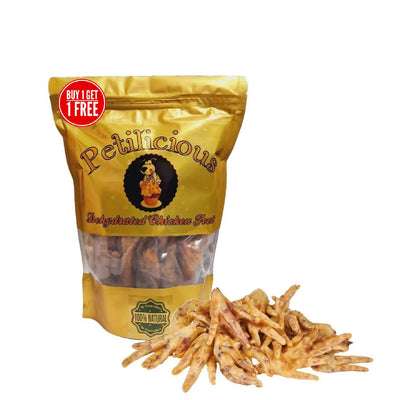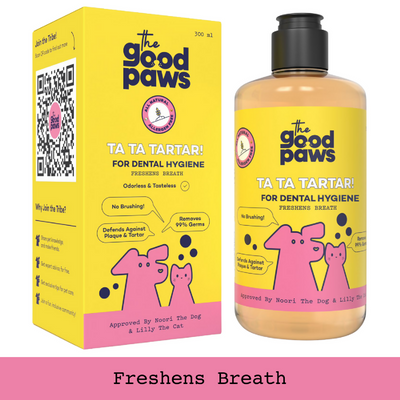If you own a dog, you have probably been in a position where you went into a pet store or looked through an internet selection of pet accessories to get a collar for your dog and were overwhelmed by the variety of alternatives. After that, you decide to purchase the one that best fits your dog or is the cutest.
Regretfully, most dog owners make costly errors while purchasing collars and leashes, among other accessories. This is a result of their ignorance of the type, substance, and needs of their dog and which collar would be best for them.
This post will provide you with a thorough understanding of the world of dog leashes and collars while attempting to alleviate the aforementioned problem. It will help you make an informed selection about what kind of collar is best for your dog and how to use it correctly.
What are the types of Dog Collars as per the dog's activities and needs?

You should think about your dog's everyday demands and activities before selecting a collar for them. Depending on the applications for each collar, you could need more than one for your dog.
1. Regular Dog Collars - Standard Collars
The most popular kind of dog collars are the basic or standard ones, as their name suggests. Standard dog collars often have leather or nylon construction and buckles made of plastic or metal. It's simple to put them on and take them off of your dog. These collars are ideal for dogs who do not pull, can be left untethered, and only need something to retain their ID tags or some type of identification on them. They are available in both basic and stylish styles.
2. Martingales and Chain Collars for Dog Training
There are those who support choke-chain dog collars and those who oppose them. Certain trainers support using obstinate dogs in training and on walks. However, choke chains may even be lethal to your dog. Thus, there are more secure options, such as the Martingale Dog Collar.
Successful training collars are martingale dog collars. Though they fit dog leashes much better, they are safer and more comfortable than choking chains. These collars, which are made of half nylon and half chain (a variant with cloth in place of the chain is appropriate for dogs with long hair), tighten to a certain extent when the dogs tug or act aggressively, but not to the point where the dogs' throat is harmed.
2.1 LED Dog Collars
As the name suggests, these dog collars feature bright stripes all over them. If you want to walk your dog early in the morning or late at night, the LED dog collars come in handy. When your dog is out for a walk, the reflective material on his collar lights up in the dark, making him visible to passing cars and pedestrians. Dog collar lights or reflectors, which may be fastened to practically any kind of collar, are an alternative to LED collars.
2.2 Water Resistant Dog Collar
Dogs in humid areas and summertime activities benefit greatly from water-resistant collars; retrievers used for duck hunting and other outdoor pursuits also benefit greatly from them. In addition to being waterproof, these collars also resist bacteria and the odour that accompanies them.
Leash and collar selection for pet restraint.
The next step is to decide which material would work best for your dog after you have decided on the style of collar that would fit him the best. These are some of the materials that are used to make dog collars.
1. Neoprene
Neoprene, a soft rubber-like material reinforced with nylon webbing and typically used in wet suits, is used to build strong and long-lasting collars for dogs frequently submerged in water. Neoprene is a costly material that dries quickly, which drives up the collar's price.
2. Metal Chain
Although metal chains work well on aggressive dogs, they are not advised for use due to their significant potential for hazards. Choke collars, often called chain collars, have the potential to strangle your dog to death. Although chain collars are strong and simple to operate, iron-based metal is susceptible to rust.
3. Nylon Material
The most common material for dog collars is nylon. For attaching IDs and for wearing about the house or on walks, nylon collars that are strong, lightweight, and comfortable are perfect for dogs. Fashion-forward dogs and their owners choose nylon dog collars since they are available in an extensive range of colours, widths, patterns, and styles. Dog collars made of nylon are less expensive but can get dirty easily and smell terrible.
4. Leather
Naturally, leather is timeless and can be used to create stylish, well-made collars that are comfortable, functional, and visually appealing. These collars come in rolling and flat styles to fit your pet better. Dogs with thick hair tangling around their collar are ideal for rolled leather collars. Leather collars are durable, pricey, and susceptible to colour fading.
5. Artificial / Faux Leather
Faux leather dog leashes and collars, sometimes known as pleather, are reasonably priced and fashionable. Although they are extremely inexpensive and stylish, they won't last long because they will soon become worn out. If you would like, you can use them only for fashion or funky pet events; otherwise, frequent use is not advised.
6. Biothane Dog Collars
The strongest substance for dog collars is biomethane. It is constructed from polyester webbing that has completely non-toxic materials, such as polyurethane or polyvinyl and is powder-coated. Dogs who enjoy the water are the perfect fit for biothane dog collars. Additionally, aggressive and tough dogs can gnaw through their collars and damage their leashes, if not their collars. Because biothane is softer, more affordable, and more flexible than neoprene or leather, it's a great substitute. Biothane is not as biodegradable as other materials. It is robust enough for any exercise and comfortable enough for daily usage.
Additionally, dog owners who want to combine durability and style can choose from a wide variety of colours and patterns in neoprene.
Choose the right buckle type for your dog collars and dog leashes.

An integral component of your dog's collar is the buckle. The kind of buckle you select will depend on your dog's needs, his activity, the collar's material, and your own taste. Here are some things to think about while selecting the sort of buckle for your dog's collar.
- Plastic Buckles. They are not extremely secure, but they are simple to lock and unlock. But exhaust rapidly. They are not the best option for outdoor pets because they become brittle in the winter and lose cohesiveness in the summer.
- Metal Buckles. The buckles made of metal are more reliable and secure. Larger, more active breeds pull their dog leashes with enormous force; therefore, they are more suited for nimble dogs who are prone to biting their collars. There are buckle designs on the market that stop dog collars from unintentionally falling off.
Matching the Dog Leashes with Dog Collars
You should be aware that your selection of dog collars may have an impact on your selections for dog leashes because there are many options available for dog leashes based on style, kind, and material.
Six feet is the normal length for dog leashes. The majority of dog leashes are made to match different kinds of dog collars made of different materials. Dog leashes come in a pattern on the market. Among the several available designs of dog leashes are retractable, recall, and adjustable. Prioritise your dog's demands and everyday activities when selecting a leash, and then follow current trends in fashion and style.
Key Takeaways of the Article
There are five fundamental questions that must be answered, To put it bluntly, before selecting the best dog collars and leashes.
1. What is the main purpose of your dog's collar—walking at night, training, swimming, or fashion? You might need to purchase various sorts of collars for your dog based on the activities and needs that they engage in.
2. Which material would be ideal for your dog's collar, based on its intended use, your dog's health, and your own preferences?
3. Does your dog's collar have any additional features or considerations that might improve its functionality?
4. Have you measured the size of your dog's collar?
5. Which type of leash would go best with your dog's collar?
And that’s it!
With all of the information and tools at your disposal, you can start looking for dog collars and leashes for your furry friend. Having a clear understanding of your needs and those of your dog will enable you to confidently choose from the thousands of dog collar and leash options available on the market.





![Common Behavioral Problems in [Pet Type] and How to Solve Them](http://www.petkonnect.in/cdn/shop/articles/Common_Behavioral_Problems_in_Dogs_and_How_to_Solve_Them.png?v=1715167147&width=400)

